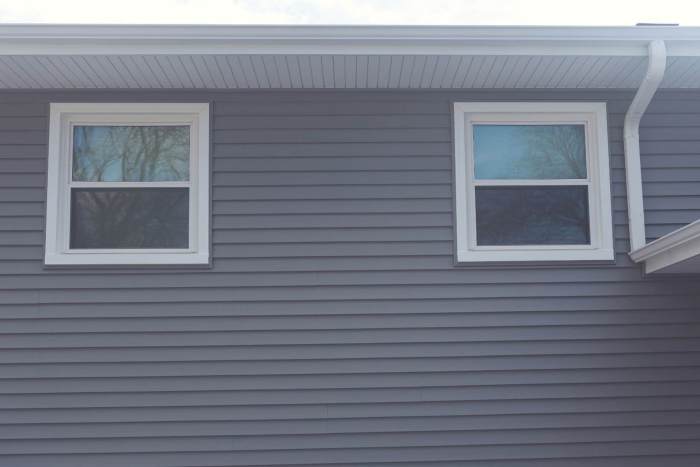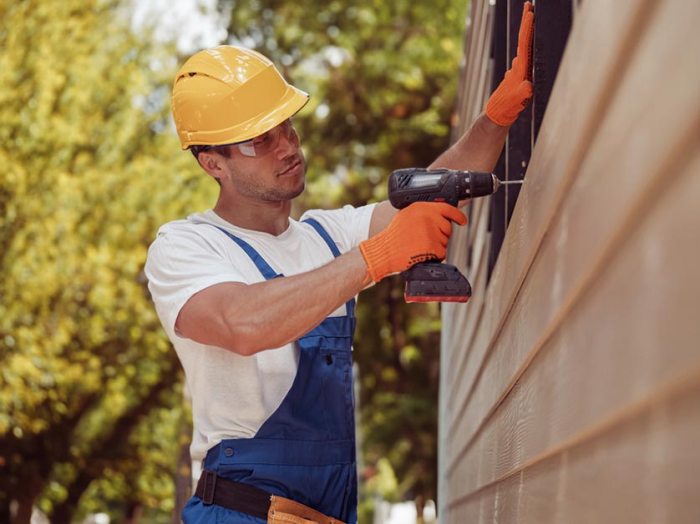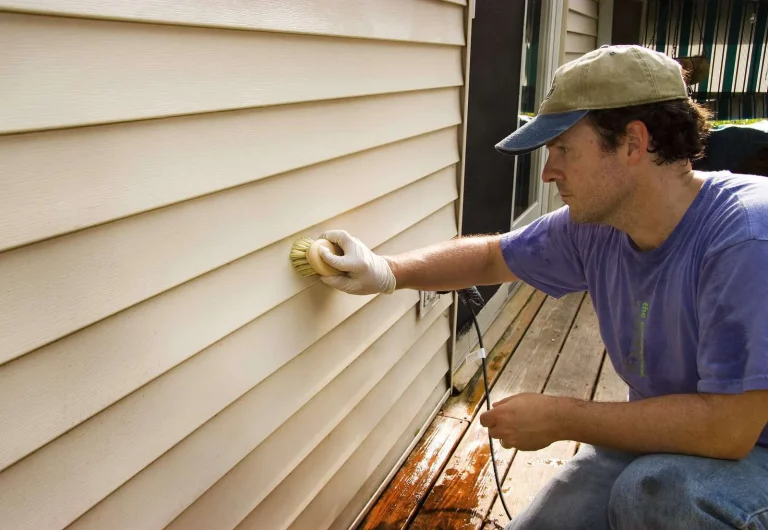House Siding Companies Your Guide to Choosing the Best
House siding companies offer a wide array of services, from installation and repair to complete replacements. Understanding the different types of siding materials, like vinyl, wood, and fiber cement, is crucial. Reputable companies prioritize quality craftsmanship and lasting results. Choosing the right company can be a significant investment, so careful consideration is key. This guide will walk you through the process, from initial research to final installation, helping you make informed decisions every step of the way.
Selecting the ideal house siding company involves thorough research and careful evaluation. Factors like experience, reputation, and pricing all play a significant role. This comprehensive guide provides practical advice and actionable steps to help you navigate the process effectively. From finding local contractors to understanding the installation process and maintenance requirements, you’ll gain a deep understanding of the entire siding journey.
Introduction to House Siding Companies
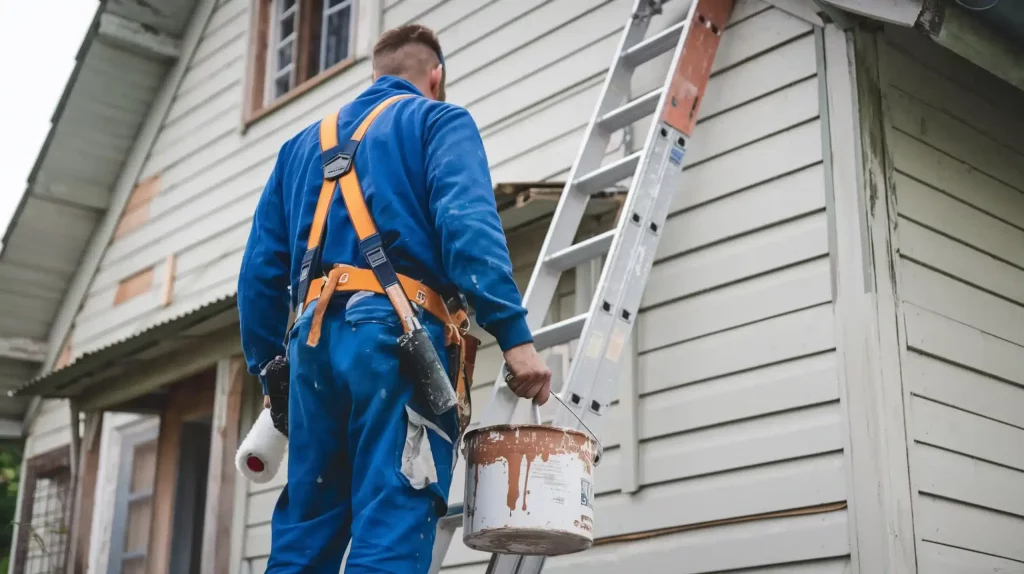
The house siding industry plays a crucial role in protecting homes from the elements and enhancing their aesthetic appeal. Choosing the right siding material and a reputable company for installation or repair is essential for long-term value and satisfaction. This section explores the various types of siding materials, the services offered by companies, and the importance of selecting a reliable provider.
Types of House Siding Materials
Different siding materials offer varying advantages in terms of cost, durability, and maintenance requirements. Common choices include vinyl, wood, and fiber cement siding. Understanding these options allows homeowners to make informed decisions, aligning with their budget and preferences.
- Vinyl siding is a popular choice due to its affordability, low maintenance, and wide range of colors and styles. Its resistance to rot and insect damage makes it a practical solution for many homeowners.
- Wood siding offers a classic aesthetic appeal. However, it requires regular maintenance to prevent rot, insect infestations, and damage from the elements. The inherent beauty and character of wood siding make it a desirable choice for those seeking a traditional look.
- Fiber cement siding provides an attractive alternative to wood, offering a similar aesthetic with enhanced durability. It is known for its resistance to rot, insects, and fire, and its longevity. This makes it a long-term investment for homeowners.
Services Offered by House Siding Companies
House siding companies typically provide a range of services beyond just installation. Comprehensive service offerings enhance customer satisfaction and ensure long-term protection of the home’s exterior.
- Installation: Professional installation is crucial for ensuring the siding’s proper fit and function, contributing to its longevity and efficiency in protecting the home.
- Repair: Addressing minor damage promptly can prevent more extensive problems and maintain the integrity of the siding system.
- Replacement: Replacing damaged or outdated siding is necessary to maintain the home’s appearance and protect it from further deterioration.
Importance of Choosing Reputable Companies
Selecting a reputable house siding company is paramount to achieving satisfactory results and avoiding potential issues down the line. A reliable company guarantees the quality of work, materials, and adherence to safety standards.
- Warranty and Guarantee: A strong warranty demonstrates the company’s confidence in its work and materials, offering protection against defects and issues that may arise over time.
- Customer Reviews and Testimonials: Reviewing online customer feedback provides insights into the company’s performance and its ability to meet customer expectations.
- Licensing and Insurance: Ensure the company holds the necessary licenses and insurance to operate legally and to protect against potential liabilities.
Siding Material Comparison
A table comparing the common siding materials based on cost, lifespan, and maintenance requirements helps homeowners make informed decisions.
| Material | Cost | Lifespan | Maintenance |
|---|---|---|---|
| Vinyl | Generally lower | Typically 20-30 years | Low, requires occasional cleaning |
| Wood | Moderate | 20-30 years (with proper maintenance) | Moderate, requires regular sealing and painting |
| Fiber Cement | Higher upfront cost | 40-50+ years | Low, requires minimal maintenance |
A higher upfront cost for fiber cement siding often translates to lower long-term maintenance costs and a longer lifespan. For example, a homeowner opting for fiber cement siding might save money over the years compared to frequent replacements or repairs of other siding types.
Finding Local House Siding Companies

Locating reputable house siding companies in your area is a crucial first step in ensuring a successful and satisfying project. Thorough research and careful consideration of potential contractors can significantly impact the outcome, from the quality of the work to the final cost. This section details effective strategies for finding qualified and reliable siding professionals.
Finding the right house siding company involves more than just a quick online search. Understanding the various avenues for locating contractors, evaluating their qualifications, and preparing informed questions to ask is essential for a smooth and successful project.
Online Directories and Review Platforms
Various online resources offer valuable tools for locating siding companies. These platforms provide access to company profiles, contact information, and customer reviews, enabling potential clients to make well-informed decisions. Well-known examples include online business directories and review websites.
- Online business directories often list local contractors. These directories typically allow filtering by location, services offered, and other relevant criteria.
- Review platforms allow homeowners to share their experiences with different siding companies. This provides valuable insights into the quality of work, professionalism, and customer service.
Identifying Licensed and Insured Contractors
Ensuring a contractor is properly licensed and insured is a critical step in the selection process. This protection safeguards homeowners from potential financial losses or legal issues. Verify the contractor’s license status through your state’s licensing board. Verify the contractor’s insurance policies. These documents guarantee protection against potential damages during the project.
Questions to Ask Potential Companies
Before committing to a siding company, it’s essential to ask the right questions. This proactive approach enables homeowners to evaluate the company’s capabilities, experience, and overall suitability. Prepare a list of pertinent questions to gauge their expertise, reliability, and commitment to the project’s success.
- Inquire about their experience in handling similar projects. Request examples of completed projects to assess their expertise and ensure their suitability.
- Seek clarification on their warranties and guarantees. Understanding the terms and conditions of warranties, the longevity, and the quality of their work.
- Obtain detailed cost estimates and payment schedules. A clear understanding of the financial aspects of the project is essential for informed decision-making.
- Verify their commitment to safety procedures and practices. Ensuring the contractor prioritizes safety throughout the project is critical for both the project’s success and the well-being of the team.
Comparison of Methods
The following table summarizes the pros and cons of different methods for finding house siding companies.
| Method | Pros | Cons |
|---|---|---|
| Online Directories | Wide reach, easy comparison, quick information | Potential for inaccurate information, lack of personal interaction |
| Review Platforms | Customer insights, social proof, trust indicators | Potential for biased reviews, not all reviews are accurate |
| Licensing/Insurance Verification | Ensures contractor’s legitimacy, protects against risk | The verification process may be time-consuming |
Evaluating House Siding Company Proposals
Scrutinizing proposals from various house siding companies is crucial for making an informed decision. A thorough evaluation ensures you receive the best possible value for your siding project, avoiding potential issues down the road. Understanding the key components of a proposal and comparing offers will help you select a reliable and trustworthy contractor.
A comprehensive proposal should provide a clear picture of the project’s scope, timeline, and payment terms. Comparing these details across different companies allows you to select the most suitable option based on your budget and project requirements. Moreover, researching the company’s past work and client references provides further insight into their reliability and competence.
Project Scope and Detail
A well-defined project scope articulates the specific work involved. This includes the type of siding material, the areas to be covered, and any necessary preparations, such as removing old siding or repairing existing structures. A precise scope minimizes potential misunderstandings and prevents extra charges for unforeseen work. The proposal should delineate all aspects of the project, from initial site preparation to final cleanup.
Timeline and Schedule
The timeline presented in the proposal should detail the estimated start and completion dates, along with key milestones throughout the project. Realistic timelines are crucial for managing expectations and avoiding delays. Be wary of overly optimistic timelines, as they might indicate a less efficient work process or inadequate resources.
Payment Terms and Conditions
The payment terms in the proposal should detail the payment schedule, including down payments, progress payments, and final payment. A clear understanding of the payment structure helps manage financial expectations and ensures transparency. Look for proposals that specify the method of payment and any associated fees.
Reference Checks and Past Work
Validating a company’s track record is vital. Inquire about previous projects and request references from satisfied clients. Reviewing completed projects, if available, provides valuable insights into the company’s workmanship and ability to meet deadlines. This crucial step helps evaluate the company’s reliability and quality of work.
Contract Types for Siding Projects
Different contract types offer various levels of protection and flexibility. Fixed-price contracts offer certainty on the final cost, but may not account for unforeseen circumstances. Cost-plus contracts, on the other hand, include a markup on expenses, potentially resulting in a more variable final cost. Understanding the nuances of each contract type is essential to selecting the best option for your project.
Essential Elements for Evaluating Proposals
| Criteria | Explanation |
|---|---|
| Project Scope | Detailed description of the work, including materials, areas, and preparations. |
| Timeline | Realistic start and completion dates with milestones. |
| Payment Terms | Clear payment schedule, down payments, progress payments, and final payment. |
| References | Contact information of satisfied clients and review of past projects. |
| Contract Type | Understanding the implications of fixed-price or cost-plus contracts. |
| Insurance | Verification of liability insurance coverage. |
| Company Reputation | Researching online reviews and industry ratings. |
Choosing the Right House Siding Company
Selecting a reputable house siding company is crucial for a successful and lasting project. Careful consideration of factors like experience, reputation, and pricing will lead to a more informed decision. A thorough evaluation of the company’s insurance and licensing ensures you’re working with a qualified and trustworthy professional.
Evaluating Company Experience and Reputation
A company’s history and track record are important indicators of its reliability. Established companies often have a wider network of satisfied clients, demonstrating a proven ability to deliver high-quality work. Look for testimonials, online reviews, and references from previous clients. Direct contact with previous clients can provide valuable insights into the company’s performance and professionalism. Positive feedback suggests the company has a good understanding of customer needs and delivers on its promises.
Assessing Financial Security and Licensing
Insurance coverage and licensing are vital aspects to verify before hiring a contractor. Insurance protects against potential financial risks associated with damages or accidents during the siding installation process. This safeguards both the company and the homeowner. Verify that the company holds the necessary licenses and permits to operate legally within the jurisdiction. This ensures compliance with local regulations and safeguards against potential legal issues.
Understanding Pricing and Payment Terms
A thorough understanding of pricing and payment terms is crucial to avoid unexpected costs or disputes. Obtain detailed estimates outlining all project costs, including materials, labor, and permits. A comprehensive breakdown allows for informed decision-making and helps manage expectations. Ensure the company clearly defines the payment schedule and any associated penalties for late payments. This transparency minimizes potential misunderstandings.
Questions to Ask About Experience and Capabilities
Asking specific questions helps assess a company’s capabilities and experience. Inquire about the company’s experience in similar projects, especially ones with similar house types and materials. This will allow you to evaluate their skill and expertise. Also, ask about their approach to handling unforeseen issues and their experience with various siding types. Furthermore, inquire about the company’s warranty policy, which guarantees the quality and durability of the work.
Checklist for Choosing a Reliable House Siding Company
| Criteria | Evaluation |
|---|---|
| Experience | Years in business, number of completed projects, references from previous clients |
| Reputation | Online reviews, testimonials, feedback from previous clients, and industry recognition |
| Pricing | Detailed estimate, transparency in cost breakdown, and payment terms |
| Insurance | Proof of liability insurance, workers’ compensation insurance |
| Licensing | Valid contractor’s license, adherence to local regulations |
| Communication | Responsiveness to inquiries, clarity in communication |
| Warranty | Length of warranty, coverage details |
This checklist provides a structured approach to evaluating potential siding companies, ensuring a well-informed decision. Use this to create a standardized method for evaluating prospective contractors.
Understanding the Siding Installation Process
The installation of house siding is a multifaceted process requiring careful planning and execution. Choosing the right siding material and installation method directly impacts the longevity and aesthetic appeal of your home’s exterior. Understanding the steps involved from preparation to finishing ensures a successful and durable outcome.
A thorough understanding of the installation process allows homeowners to make informed decisions about their siding project, anticipate potential challenges, and ensure a high-quality final product. This includes comprehending the various installation methods, the importance of precise measurements, and the significance of proper preparation to avoid costly errors or future issues.
Preparation Stage
Careful preparation is the cornerstone of a successful siding installation. This stage ensures a solid foundation for the new siding and minimizes potential problems down the road. It encompasses several critical steps, including meticulous site evaluation, necessary demolition and cleanup, and the crucial task of proper surface preparation.
- Site Evaluation: Inspect the existing siding, framing, and support structure. Identify any damage, rot, or structural issues that need to be addressed before proceeding with the installation. This proactive assessment prevents future problems.
- Demolition and Cleanup: Carefully remove the old siding, ensuring proper disposal and waste management. Thorough cleanup is vital for a clean installation site, and proper waste disposal is essential.
- Surface Preparation: Ensure the surface is clean, dry, and free of debris, loose materials, or any other contaminants. This may involve cleaning the surface, repairing damaged wood, or applying primer as needed. Proper surface preparation ensures the new siding adheres securely and lasts longer.
Installation Stage
The installation stage is the core of the project, requiring precision and expertise. The installation process varies depending on the chosen siding type and the specific requirements of the project. Accurate measurements are paramount to ensure proper fit and alignment.
- Measurements and Estimation: Accurate measurements of the home’s exterior are critical for precise material calculations. Professional installers use specialized tools and techniques to ensure the materials are ordered in the right quantity to avoid costly shortages. A reliable estimate considers not only the siding itself but also associated materials like fasteners, flashing, and accessories.
- Installation Techniques: Different siding materials demand specific installation methods. For example, vinyl siding is typically attached using adhesive or nails, while fiber cement siding may require specialized clips or fasteners. Each material’s unique characteristics necessitate appropriate installation techniques for long-term durability and aesthetic appeal. The installation method selected should align with the material specifications and building codes.
- Framing and Support: The framing and support structure beneath the siding needs to be inspected and repaired if necessary. Ensure the support system is strong enough to bear the weight of the new siding. This may include reinforcement or replacement of damaged components. Sufficient support is crucial for the long-term stability of the installation.
Finishing Stage
The finishing stage completes the project, ensuring a professional and finished look. It involves addressing any remaining details and ensuring the siding is properly sealed and protected.
- Finishing Touches: This step includes installing any necessary accessories like flashing, trim, and corner pieces. This ensures a clean and seamless transition between different sections of siding and enhances the overall aesthetic of the project. Careful attention to detail during this phase ensures a polished final product.
- Quality Control: Inspect the entire installation for any gaps, misalignments, or imperfections. High-quality installations require a meticulous eye for detail. Proper quality control prevents minor issues from escalating into significant problems.
Maintaining Your House Siding
Proper maintenance of your house siding is crucial for preserving its aesthetic appeal and extending its lifespan. Regular upkeep can significantly reduce the need for costly repairs and replacements, ultimately saving you money in the long run. Understanding the specific needs of your siding material and performing routine checks are key components of a successful maintenance strategy.
Importance of Routine Maintenance for Different Siding Materials
Different siding materials react differently to environmental factors. Regular maintenance helps prevent premature deterioration and damage. For instance, wood siding requires more frequent treatments to prevent rot and insect infestations, while vinyl siding is generally more resistant but still benefits from periodic cleaning to maintain its pristine appearance.
Preventing Damage and Extending Siding Lifespan
Several preventative measures can significantly extend the life of your siding. Regular inspections for signs of damage, such as cracks, gaps, or loose panels, are essential. Addressing these issues promptly can prevent them from escalating into larger, more costly problems. Proper sealing of gaps and cracks can also protect against water damage and moisture penetration.
Preventative Measures Against Weather Damage
Protecting your siding from weather damage is paramount. Regular cleaning to remove accumulated debris, such as leaves, twigs, and dirt, prevents moisture buildup and fungal growth. Ensuring proper drainage around the foundation and gutters prevents water from pooling against the siding. In areas prone to strong winds, securing loose or damaged panels can prevent significant structural damage.
Cleaning and Inspecting the Siding Regularly
Regular cleaning and inspection are fundamental to maintaining healthy siding. For example, soft-bristled brushes or specialized siding cleaning tools are effective for removing dirt and grime. Inspecting for signs of damage, such as warping, cracking, or discoloration, is crucial. Addressing any issues promptly is key to maintaining the integrity of your siding.
Maintenance Schedule for Various Siding Types
| Siding Type | Frequency of Cleaning | Frequency of Inspection | Specific Maintenance Tasks |
|---|---|---|---|
| Wood | Quarterly (spring and fall) | Monthly | Inspect for rot, insect damage, and loose nails. Apply wood sealant or stain as needed. |
| Vinyl | Semi-annually (spring and fall) | Quarterly | Clean with mild soap and water. Inspect for cracks, gaps, or discoloration. |
| Fiber Cement | Annually | Semi-annually | Wash with a mild detergent solution. Inspect for cracks, loose panels, and signs of water damage. |
| Metal | Annually | Quarterly | Inspect for dents, rust, and loose fasteners. Clean with a soft brush or pressure washer. |
Note: This schedule is a general guideline and may need adjustments based on specific environmental conditions and the condition of the siding.
Addressing Common Siding Issues: House Siding Companies
Maintaining the integrity of your house siding is crucial for its longevity and aesthetic appeal. Properly addressing issues early can prevent more significant problems and costly repairs down the line. This section details common siding problems, how to detect them, and recommended repair methods.
Identifying and promptly fixing siding issues can save you money and time. Ignoring small problems can lead to larger, more expensive repairs in the future. Understanding the types of damage and the solutions available empowers you to make informed decisions about maintaining your home’s exterior.
Common Siding Damage Types
Recognizing different types of damage is vital for effective repair. Various factors, such as weather exposure, pests, and improper installation, can contribute to siding issues. Understanding the causes allows for targeted solutions and prevents future problems.
- Moisture Damage: Water intrusion is a common culprit behind siding deterioration. Water can penetrate gaps, cracks, or damaged areas, leading to rot, mold, and structural weakening. Early detection involves regularly inspecting the siding for any signs of dampness, discoloration, or soft spots. Solutions include caulking gaps, repairing damaged sections, and ensuring proper drainage around the house. If moisture damage is extensive, professional remediation might be necessary.
- Pest Infestation: Termites, rodents, and other pests can cause significant damage to siding materials, especially wood. Inspect the siding for signs of chewed wood, droppings, or unusual activity. Addressing pest issues promptly is essential to prevent further damage. Professional pest control services are often required for effective eradication.
- Physical Damage: Impacts from falling objects, strong winds, or improper handling during installation can lead to dents, cracks, or breaks in the siding. Visual inspection is crucial to identify any physical damage promptly. Repairing the damaged sections involves replacing damaged boards, patching holes, or applying suitable fillers, depending on the severity and type of siding.
- Deterioration due to Weather Exposure: Constant exposure to sunlight, rain, and extreme temperatures can lead to fading, cracking, or warping of siding materials. Regular inspections, particularly after storms or periods of extreme weather, are essential to detect these issues early. Solutions may include repainting, resealing, or replacing damaged sections, depending on the severity and type of siding.
Methods for Detecting Problems Early, House Siding Companies
Regular inspections are key to preventing major siding problems. By proactively checking for signs of damage, you can address issues before they escalate.
- Visual Inspection: A thorough visual inspection should be conducted at least twice a year, more frequently after storms or extreme weather events. Look for signs of moisture, pest activity, or physical damage. Pay attention to areas around windows, doors, and eaves, where moisture often collects.
- Touch Inspection: Gently touch the siding to check for any soft spots, loose boards, or unusual textures. This helps detect early signs of moisture damage or structural problems.
- Professional Inspection: Consider a professional inspection every few years for a comprehensive assessment of the siding’s condition and potential problems. A professional can identify issues that might be missed during a homeowner’s visual inspection.
Repairing Common Siding Issues
Addressing siding problems effectively depends on the nature and extent of the damage.
| Siding Issue | Description | Solutions |
|---|---|---|
| Moisture Damage (e.g., rot, mold) | Water intrusion is causing deterioration. | Caulking gaps, repairing damaged sections, ensuring proper drainage, and professional remediation (if extensive). |
| Pest Infestation (e.g., termite damage) | Damage caused by pests. | Professional pest control, replacing damaged sections, and treating the affected areas. |
| Physical Damage (e.g., dents, cracks) | Damage from impacts or other physical forces. | Replacing damaged boards, patching holes, and applying suitable fillers, depending on the siding type and damage severity. |
| Deterioration (e.g., fading, warping) | Damage from weather exposure. | Repainting, resealing, and replacing damaged sections. |
Financial Considerations for Siding Projects
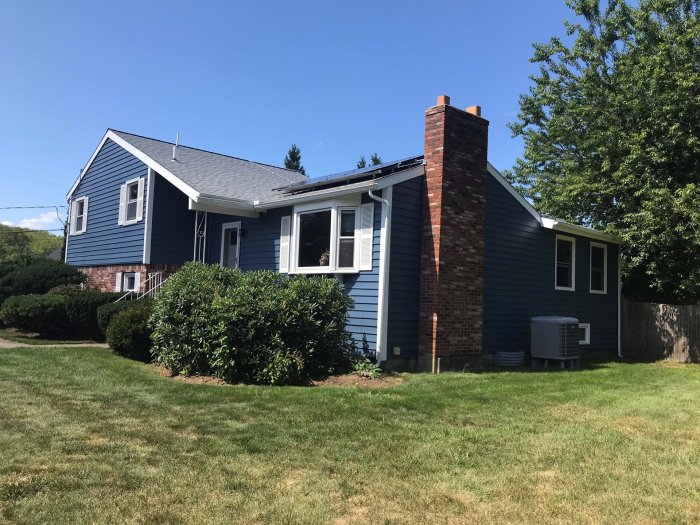
Source: newpro.com
Understanding the financial aspects of a house siding project is crucial for making informed decisions. This section explores the costs involved, factors influencing pricing, and strategies for budgeting effectively. Careful planning can prevent unexpected expenses and ensure a smooth and successful project.
Costs Associated with House Siding Projects
The total cost of a siding project is influenced by numerous factors. These range from the type of siding material chosen to the size and complexity of the project itself. A comprehensive understanding of these costs is essential for creating a realistic budget.
Factors Affecting Siding Project Pricing
Several key factors contribute to the overall cost of a house siding project. Material costs vary significantly based on the type of siding material selected, ranging from the affordability of vinyl to the higher price points of fiber cement or cedar. Labor costs, including the expertise and experience of the installers, are another crucial component. The size and scope of the project, including the number of square feet of siding to be replaced or installed, also significantly impact the overall cost. Additional costs might include permits, removal of old siding, and cleanup.
Budgeting for Siding Projects
Developing a detailed budget is a crucial step in managing the financial aspects of a siding project. This involves estimating the material costs, labor expenses, and any other potential associated fees. A breakdown of the anticipated costs, including a contingency for unforeseen expenses, is highly recommended.
Examples of Different Siding Budgets and Corresponding Projects
A small-scale project, replacing the siding on a single-story house with vinyl siding, might have a budget ranging from $5,000 to $10,000. This would typically include the material, labor, and disposal of the old siding. A more extensive project, encompassing a larger two-story home and requiring the installation of composite siding, could easily range from $15,000 to $30,000 or more. This wider range accounts for the higher material costs and potential complexity of the project. The costs depend on the specific project details and local labor rates.
Estimated Costs for Various Siding Projects
| Siding Type | Estimated Cost (per square foot) | Project Description |
|---|---|---|
| Vinyl | $5 – $10 | Replacing siding on a typical single-story home. |
| Fiber Cement | $10 – $15 | Installing new fiber cement siding on a two-story home, including removing the old siding. |
| Cedar | $15 – $25 | Replacing all exterior siding on a Craftsman-style home, potentially including more complex trim work. |
| Composite | $12 – $20 | Replacing siding on a large, multi-level home with a significant amount of architectural detail. |
Note: These are estimated costs and can vary based on location, labor rates, material availability, and project complexity.
Final Review
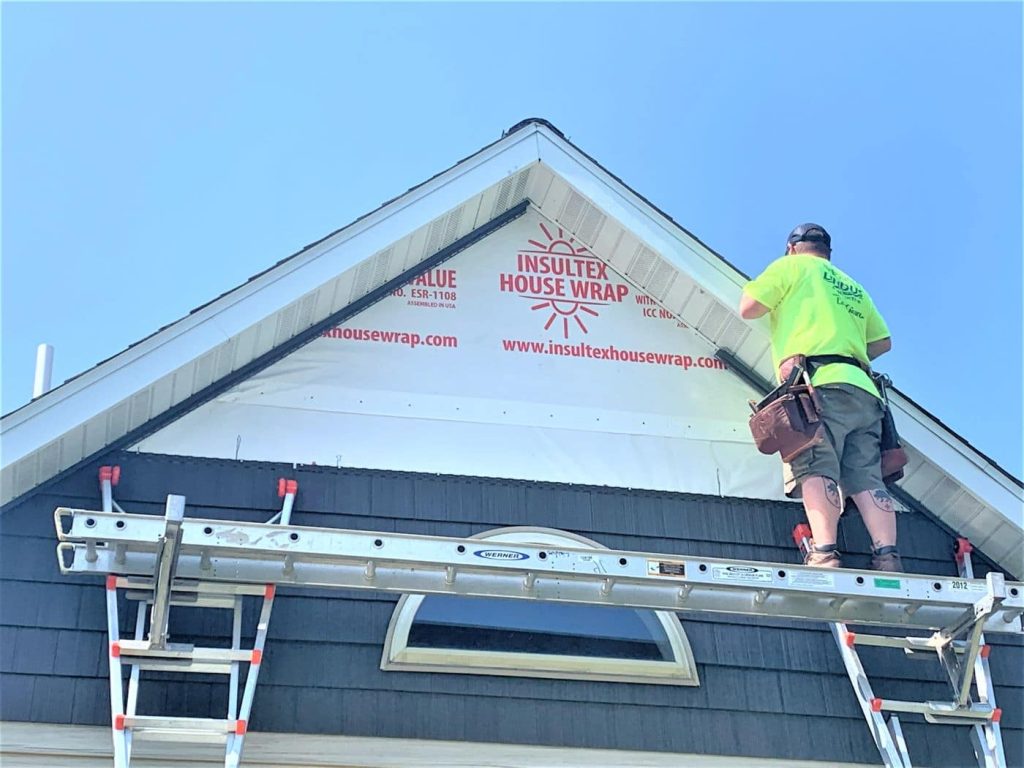
In conclusion, choosing the right house siding company involves a multifaceted approach. From initial research and evaluation to the final installation and maintenance, careful consideration is paramount. This guide has equipped you with the knowledge and resources to confidently navigate the process. By understanding the various aspects, from material choices to financial considerations, you’ll be well-prepared to make the best decision for your home’s exterior. Remember, selecting a reputable company is a key step toward a beautiful and durable home improvement project.
